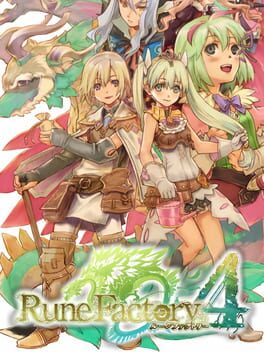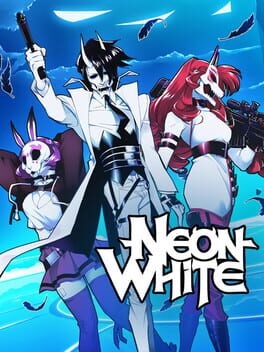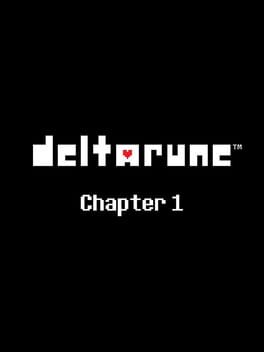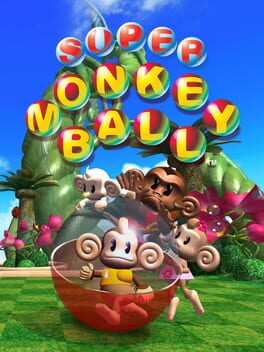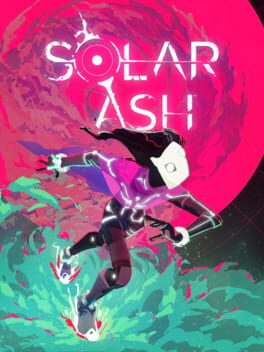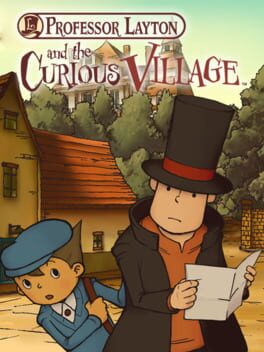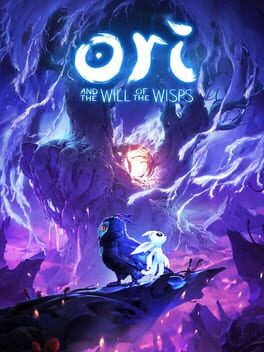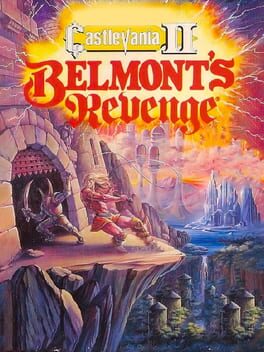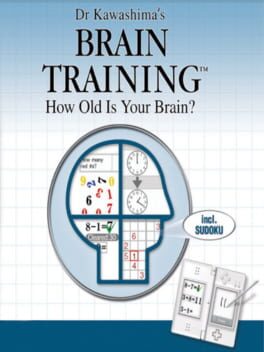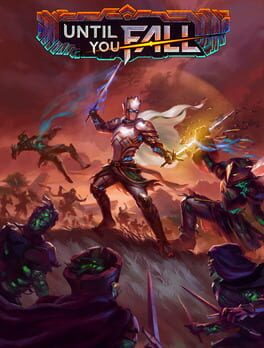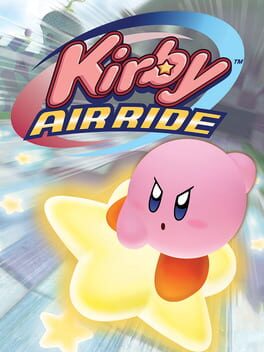AutumnLily
2012
Somehow went from exclaiming "this is the perfect videogame" multiple times in my first several hours in Rune Factory 4, to being 20 hours into it and pretty happy to never play it again despite only being around about halfway through the main storyline.
Rune Factory 4 really has everything. Effortless, overflowing amounts of charm with every character leaving some sort of positive impression, an expansive farming system with so much depth sprawling in seemingly every imaginable direction, arpg goodness with a ton of different environments each with plenty of personality and unique touches, a ton of weapons (some delightfully goofy) with meaningfully different movesets for you to go chew through all manner of environments with, the ability to turn almost any enemy in the game into your own personal Pokémon and either set your army of critters to work on your farm or take them out adventuring with you, loads of secrets, loads of polish (I can't really overstate quite how impressive the level of polish is here), always something exciting to be working towards both narratively and in terms of building up your home/farm/town.
Rune Factory 4 really has everything. My mind freezes up as I use my magnifying glass to see so many stats about the soil quality of this specific tile, half of that stats feeling like they mean nothing. Five different crafting systems, a few of those with several different subcategories of crafting system associated with them, all of which need to be levelled up individually, and you better engage with these myriad mediocre crafting systems because you have to sell all this pointless garbage you're making to get the shipping rate higher. Stats you can level up for literally anything you can imagine, from using a specific class of weapon, to walking, to bathing. Storage boxes and fridges stuffed full of literally anything and everything you've found that you haven't had to either sell for money or use up in crafting. Yellow speech bubbles above characters indicating you haven't talked to them yet today, begging you to go find every single one of them every single day because of course the game expects you to befriend each and every townsfolk. Endless rooms of enemies where you just resort to bashing the same two buttons over and over to grind experience. Vegetable and flower seeds that start at level 1 and which you can specifically go out of your way to individually grind up to level 9 one growth cycle at a time. A princess points task system that gave me nightmares of Animal Crossing: New Horizons' Nook Miles for all the pointless busywork it encourages. The same handful of trees and stones you have to return to day after day to get the ever crucial lumber and ore you need mountains of in order to build anything.
Leaving you drowning amongst its menagerie of empty compulsion loops, Rune Factory 4 is the perfect abyss. I loved a lot of my time with it, the game is genuinely beautifully made in many regards and it's hard to imagine a game really being better at the specific thing Rune Factory 4 is trying to accomplish, but despite this fuck I'm glad I got out when I did.
Rune Factory 4 really has everything. Effortless, overflowing amounts of charm with every character leaving some sort of positive impression, an expansive farming system with so much depth sprawling in seemingly every imaginable direction, arpg goodness with a ton of different environments each with plenty of personality and unique touches, a ton of weapons (some delightfully goofy) with meaningfully different movesets for you to go chew through all manner of environments with, the ability to turn almost any enemy in the game into your own personal Pokémon and either set your army of critters to work on your farm or take them out adventuring with you, loads of secrets, loads of polish (I can't really overstate quite how impressive the level of polish is here), always something exciting to be working towards both narratively and in terms of building up your home/farm/town.
Rune Factory 4 really has everything. My mind freezes up as I use my magnifying glass to see so many stats about the soil quality of this specific tile, half of that stats feeling like they mean nothing. Five different crafting systems, a few of those with several different subcategories of crafting system associated with them, all of which need to be levelled up individually, and you better engage with these myriad mediocre crafting systems because you have to sell all this pointless garbage you're making to get the shipping rate higher. Stats you can level up for literally anything you can imagine, from using a specific class of weapon, to walking, to bathing. Storage boxes and fridges stuffed full of literally anything and everything you've found that you haven't had to either sell for money or use up in crafting. Yellow speech bubbles above characters indicating you haven't talked to them yet today, begging you to go find every single one of them every single day because of course the game expects you to befriend each and every townsfolk. Endless rooms of enemies where you just resort to bashing the same two buttons over and over to grind experience. Vegetable and flower seeds that start at level 1 and which you can specifically go out of your way to individually grind up to level 9 one growth cycle at a time. A princess points task system that gave me nightmares of Animal Crossing: New Horizons' Nook Miles for all the pointless busywork it encourages. The same handful of trees and stones you have to return to day after day to get the ever crucial lumber and ore you need mountains of in order to build anything.
Leaving you drowning amongst its menagerie of empty compulsion loops, Rune Factory 4 is the perfect abyss. I loved a lot of my time with it, the game is genuinely beautifully made in many regards and it's hard to imagine a game really being better at the specific thing Rune Factory 4 is trying to accomplish, but despite this fuck I'm glad I got out when I did.
2022
Summer Games Down Quick just finished a few days ago, and as per usual I had the event's Twitch stream open basically any waking moment of the day that I wasn't either working or hanging out with one of my partners. It's partly that I love the atmosphere of the event and what it stands for, partly that it acts as a showcase for all sorts of cool stuff, but also that watching speedrunning is just immensely fascinating to me. People are honestly just incredible, and high-level speedruns act as this really impressive display of commitment, knowledge and skill.
That said, I've never really understood what would make someone actually want to pour thousands of hours into a single video game both just generally, but more specifically in search of making your time as low as possible. When I think of the things that draw me towards video games, their strengths as an artform, I think of the potential for self-expression, the depth of worldbuilding, the manner in which they can provide experiences and stories that feel unique to you. The thought of getting to grind the same route through the game many hundreds of times to shave off a few seconds doesn't really crop up there.
I'm not sure I'll ever really get it, but my early days with Neon White are the closest I've come. It starts with you figuring out the route for the level, getting a silver medal on your first try, and thinking "huh, why not push for gold then?". Upon attaining the gold medal the game gives you a hint for how to get the platinum, a shortcut you maybe missed, so you feel compelled to go back and add that to your run. Suddenly you're only a couple seconds behind someone on your friends list leaderboard so you return again, tightening up your lines, lining up a shot you didn't think of, and before you know it you're fighting to claw up the overall leaderboard, a flurry of F-space-F-space-F-space as you try to get the perfect opening. That iterative fight to become the best you can be.
It wore off for me, ultimately. As the game goes on the levels get longer in a way that makes fighting for a good time much more of a commitment, and the longer the game has been out the more ludicrously competitive the leaderboard has become to the point where the best times are at once both mind-blowing but also demoralising for anyone who hasn't spent years honing pinpoint accurate mouse-twitching. The rest of the game after I crashed back to reality was a solid enough romp, before a genuinely thrilling final 15 or so levels that explore really cool mechanical territory. The magic was gone, and my interest in grinding out good times is unlikely to come back, but it was a fun moment whilst it lasted.
Unrelatedly, I feel like the response to the writing in this game has been a tad harsh. The "social link" style hanging out portions are quite bad, to the extent that even I started skipping them at the halfway point (and I read visual novels), but the various backstories are solid enough, I liked the characters when the game wasn't straining itself to be funny, and the final third of the story is legitimately pretty good. Faint praise, but I certainly didn't hate this aspect of the game like a lot of people did.
That said, I've never really understood what would make someone actually want to pour thousands of hours into a single video game both just generally, but more specifically in search of making your time as low as possible. When I think of the things that draw me towards video games, their strengths as an artform, I think of the potential for self-expression, the depth of worldbuilding, the manner in which they can provide experiences and stories that feel unique to you. The thought of getting to grind the same route through the game many hundreds of times to shave off a few seconds doesn't really crop up there.
I'm not sure I'll ever really get it, but my early days with Neon White are the closest I've come. It starts with you figuring out the route for the level, getting a silver medal on your first try, and thinking "huh, why not push for gold then?". Upon attaining the gold medal the game gives you a hint for how to get the platinum, a shortcut you maybe missed, so you feel compelled to go back and add that to your run. Suddenly you're only a couple seconds behind someone on your friends list leaderboard so you return again, tightening up your lines, lining up a shot you didn't think of, and before you know it you're fighting to claw up the overall leaderboard, a flurry of F-space-F-space-F-space as you try to get the perfect opening. That iterative fight to become the best you can be.
It wore off for me, ultimately. As the game goes on the levels get longer in a way that makes fighting for a good time much more of a commitment, and the longer the game has been out the more ludicrously competitive the leaderboard has become to the point where the best times are at once both mind-blowing but also demoralising for anyone who hasn't spent years honing pinpoint accurate mouse-twitching. The rest of the game after I crashed back to reality was a solid enough romp, before a genuinely thrilling final 15 or so levels that explore really cool mechanical territory. The magic was gone, and my interest in grinding out good times is unlikely to come back, but it was a fun moment whilst it lasted.
Unrelatedly, I feel like the response to the writing in this game has been a tad harsh. The "social link" style hanging out portions are quite bad, to the extent that even I started skipping them at the halfway point (and I read visual novels), but the various backstories are solid enough, I liked the characters when the game wasn't straining itself to be funny, and the final third of the story is legitimately pretty good. Faint praise, but I certainly didn't hate this aspect of the game like a lot of people did.
2015
The real reason Bloodborne owns is that there are a truly absurd number of wives in this game, including;
- Lesbian Wife (Lady Maria)
- Other Lesbian Wife (Eileen)
- Likes-Biting Wife (Thiccer Amelia)
- Eldritch Monstrosity Wife (Ebrietas)
- Dollification Wife (The Doll)
- Medfet Wife (Iosefka)
- Breeding Kink Wife (Rom)
Anyone who was shocked by Miyazaki admitting he's a masochist really wasn't paying any attention
- Lesbian Wife (Lady Maria)
- Other Lesbian Wife (Eileen)
- Likes-Biting Wife (Thiccer Amelia)
- Eldritch Monstrosity Wife (Ebrietas)
- Dollification Wife (The Doll)
- Medfet Wife (Iosefka)
- Breeding Kink Wife (Rom)
Anyone who was shocked by Miyazaki admitting he's a masochist really wasn't paying any attention
2015
In Defence of Bloodborne
The notion of Bloodborne needing defending is patently absurd; it's one of the ten highest rated games on this site, one of the most beloved games of the last ten years, and seems to be the most common answer when people are asked for their favourite FromSoft title. That said, whilst I really enjoyed the game first time round it was with considerable reservations (a 4 star rating and no more), and only on my recent New Game+ playthrough did the game flourish for me as all my former complaints, amounting more or less to a list of most of the common complaints held against the game, melted away. This review won't address any of the already widely praised strengths of the game (the stunning art direction, atmosphere and level design; FromSoft's best collection of weapons; the kinetic, fast-paced combat brought alive by the rally system; etc etc etc), but instead just seeks to talk through my change of perspective on those weaknesses.
The two most widely criticised aspects of Bloodborne are the blood vial system and the chalice dungeons, and these are both aspects that bothered me in my first playthrough too. Blood vials are very thematically effective, periodically putting you in this bloodthirsty place when you run low on them, desperately searching for sustenance by slaughtering early mobs over and over, truly making you the hunter, but they also necessitate grinding and are ultimately pace-breaking when you're forced to abandon a tough boss fight to go scavenge. Chalice dungeons stand in stark contrast to the tight, creative, intentional level design that FromSoft is known for to instead be more like a Souls roguelike with even the premade chalice dungeons feeling procedurally generated, and it's easy for them to be disappointing with this in mind.
Something widely commented upon about Elden Ring was how the various caves and catacombs allowed you to scale the game to your liking. If you're really experienced with these games already you only had to do a handful of these excursions to stock up on smithing stones, whilst those who are struggling, held up from making story progress by Margit or some other imposing boss, would have a lot of this optional side content to go grind through in order to gain a few extra levels, find a couple nice new pieces of equipment, and return to face The Fell Omen more prepared than before. I think this is how the chalice dungeons are actually meant to be treated. If you vibe with them then cool, go chalice it up to your heart's content; the level design might be a bit janky, but Bloodborne's combat is good enough that the chalice dungeons are still honestly more solidly fun to wander through than I originally gave credit. But if you're getting murdered by a boss so much that you have nary a blood vial left then it's possible what you need isn't just a vial refill, but also a couple extra levels or another good gem to plug into your weapon. People who find places in Souls games to go grind out souls and get those extra levels is already a well-recorded phenomenon, and chalices are honestly the perfect answer to that; near-endless content for people who do want to grind out those extra levels. The blood vial system is the one part of the game I still regard as Decidedly Not Perfect, but I've grown to appreciate the way it says "hey maybe stop just bashing your head against this clearly-too-difficult-for-you-right-now boss and go level up a bit first?", and think that actually listening to those cries and taking breaks from Orphan of Kos to go do chalice dungeons for a couple hours would have led to a better experience than thinking all I needed was to go grind enough blood vials in a mid-game area for a few more attempts at beating that very screamy child.
On a minor note, Bloodborne is the FromSoft game that most wants to support the existence of New Game+ with the last couple chalice dungeons, leading up to a super secret bonus boss, very clearly being content that is meant to be scaled to a New Game+ (or higher) character, and with progress on chalice dungeons being retained between New Game+ cycles. Whilst this might not excuse some of the frustration of running out of blood vials on your initial playthrough, the moment you enter New Game+ and proceed through the game for a second time you'll be earning enough echoes that it becomes trivially easy to have 100+ vials available to you at all times. These frustrations are unfortunate but are also only temporary.
The bosses of Bloodborne are also a point of contention, and I found them uneven initially with some standing out as all-time great boss fights whilst others end up being far less mechanically engaging and even a bit awkward at times. To circle back around to Elden Ring again, one strange thing that game did for me was make me appreciate the boss design of Demon's Souls a lot more. Elden Ring's boss designs follow a very consistent style, and that certainly suits what that game is, but with less than a handful of what could be referred to as puzzle bosses a lot of this content can blur together. Demon's Souls definitely has a bunch of bosses that are not very mechanically challenging or that read as gimmicky, but there are maybe only two or three bosses in that entire game that wouldn't count as memorable. I think the best bosses in these games being ones like Artorias, Gael and Lady Maria, combined with the SoulsBorne reputation of being challenging, has brain poisoned us to want every boss in these games to match that template. All of this is a long-winded way of saying that playing through Elden Ring has turned me into the kind of person that will die on the hill that Rom, One Reborn, The Witches of Hemwick and Micolash are all genuinely good bosses, despite not being that challenging nor testing your combat skills particularly, because they all stand as memorable experiences. A year after originally fighting Micolash I would still quote his lines, the visual design of the Rom encounter remained seared into my brain right up until the start of this New Game+ playthrough, and ultimately the fact that these bosses contrast against the rest of Bloodborne serves as a strength rather than a weakness as it stops the overall experience from homogenising.
Finally, the lore of Bloodborne stands out as the one part of the game I wasn't completely onboard with on my first playthrough that most everyone else seemed to love, but this is an aspect of the game that really comes alive with repeat visits. I don't want to go too deep into this, people have done this enough already and this review is long enough as it is, but two things to consider are; what initially seems like a fairly simple condemnation of the church and the power institutions can wield over people gains a lot more depth when you realise that Bloodborne is less about supernatural critters and madness than it is about eugenics, classism and the myth of intelligence; most of the supernatural critters in Bloodborne were initially harmless, just kind of vibing and doing their own thing, and only became so dangerous because people made them so in our lust for knowledge and power.
Anyways, Bloodborne kind of just whips.
The notion of Bloodborne needing defending is patently absurd; it's one of the ten highest rated games on this site, one of the most beloved games of the last ten years, and seems to be the most common answer when people are asked for their favourite FromSoft title. That said, whilst I really enjoyed the game first time round it was with considerable reservations (a 4 star rating and no more), and only on my recent New Game+ playthrough did the game flourish for me as all my former complaints, amounting more or less to a list of most of the common complaints held against the game, melted away. This review won't address any of the already widely praised strengths of the game (the stunning art direction, atmosphere and level design; FromSoft's best collection of weapons; the kinetic, fast-paced combat brought alive by the rally system; etc etc etc), but instead just seeks to talk through my change of perspective on those weaknesses.
The two most widely criticised aspects of Bloodborne are the blood vial system and the chalice dungeons, and these are both aspects that bothered me in my first playthrough too. Blood vials are very thematically effective, periodically putting you in this bloodthirsty place when you run low on them, desperately searching for sustenance by slaughtering early mobs over and over, truly making you the hunter, but they also necessitate grinding and are ultimately pace-breaking when you're forced to abandon a tough boss fight to go scavenge. Chalice dungeons stand in stark contrast to the tight, creative, intentional level design that FromSoft is known for to instead be more like a Souls roguelike with even the premade chalice dungeons feeling procedurally generated, and it's easy for them to be disappointing with this in mind.
Something widely commented upon about Elden Ring was how the various caves and catacombs allowed you to scale the game to your liking. If you're really experienced with these games already you only had to do a handful of these excursions to stock up on smithing stones, whilst those who are struggling, held up from making story progress by Margit or some other imposing boss, would have a lot of this optional side content to go grind through in order to gain a few extra levels, find a couple nice new pieces of equipment, and return to face The Fell Omen more prepared than before. I think this is how the chalice dungeons are actually meant to be treated. If you vibe with them then cool, go chalice it up to your heart's content; the level design might be a bit janky, but Bloodborne's combat is good enough that the chalice dungeons are still honestly more solidly fun to wander through than I originally gave credit. But if you're getting murdered by a boss so much that you have nary a blood vial left then it's possible what you need isn't just a vial refill, but also a couple extra levels or another good gem to plug into your weapon. People who find places in Souls games to go grind out souls and get those extra levels is already a well-recorded phenomenon, and chalices are honestly the perfect answer to that; near-endless content for people who do want to grind out those extra levels. The blood vial system is the one part of the game I still regard as Decidedly Not Perfect, but I've grown to appreciate the way it says "hey maybe stop just bashing your head against this clearly-too-difficult-for-you-right-now boss and go level up a bit first?", and think that actually listening to those cries and taking breaks from Orphan of Kos to go do chalice dungeons for a couple hours would have led to a better experience than thinking all I needed was to go grind enough blood vials in a mid-game area for a few more attempts at beating that very screamy child.
On a minor note, Bloodborne is the FromSoft game that most wants to support the existence of New Game+ with the last couple chalice dungeons, leading up to a super secret bonus boss, very clearly being content that is meant to be scaled to a New Game+ (or higher) character, and with progress on chalice dungeons being retained between New Game+ cycles. Whilst this might not excuse some of the frustration of running out of blood vials on your initial playthrough, the moment you enter New Game+ and proceed through the game for a second time you'll be earning enough echoes that it becomes trivially easy to have 100+ vials available to you at all times. These frustrations are unfortunate but are also only temporary.
The bosses of Bloodborne are also a point of contention, and I found them uneven initially with some standing out as all-time great boss fights whilst others end up being far less mechanically engaging and even a bit awkward at times. To circle back around to Elden Ring again, one strange thing that game did for me was make me appreciate the boss design of Demon's Souls a lot more. Elden Ring's boss designs follow a very consistent style, and that certainly suits what that game is, but with less than a handful of what could be referred to as puzzle bosses a lot of this content can blur together. Demon's Souls definitely has a bunch of bosses that are not very mechanically challenging or that read as gimmicky, but there are maybe only two or three bosses in that entire game that wouldn't count as memorable. I think the best bosses in these games being ones like Artorias, Gael and Lady Maria, combined with the SoulsBorne reputation of being challenging, has brain poisoned us to want every boss in these games to match that template. All of this is a long-winded way of saying that playing through Elden Ring has turned me into the kind of person that will die on the hill that Rom, One Reborn, The Witches of Hemwick and Micolash are all genuinely good bosses, despite not being that challenging nor testing your combat skills particularly, because they all stand as memorable experiences. A year after originally fighting Micolash I would still quote his lines, the visual design of the Rom encounter remained seared into my brain right up until the start of this New Game+ playthrough, and ultimately the fact that these bosses contrast against the rest of Bloodborne serves as a strength rather than a weakness as it stops the overall experience from homogenising.
Finally, the lore of Bloodborne stands out as the one part of the game I wasn't completely onboard with on my first playthrough that most everyone else seemed to love, but this is an aspect of the game that really comes alive with repeat visits. I don't want to go too deep into this, people have done this enough already and this review is long enough as it is, but two things to consider are; what initially seems like a fairly simple condemnation of the church and the power institutions can wield over people gains a lot more depth when you realise that Bloodborne is less about supernatural critters and madness than it is about eugenics, classism and the myth of intelligence; most of the supernatural critters in Bloodborne were initially harmless, just kind of vibing and doing their own thing, and only became so dangerous because people made them so in our lust for knowledge and power.
Anyways, Bloodborne kind of just whips.
2018
It's very impressive how Chapter 1 of Deltarune manages to simultaneously embrace the love people have for Undertale's characters and the emotions that game made its fans feel whilst also being something very unique and different that doesn't want to just live in Undertale's shadow. How it manages to subvert Undertale's subversions and play with your expectations in delightful and meaningful ways. How it stands on its own as a genuinely affecting self-contained story, whilst hinting at the larger themes and story-beats just enough to entice you and yet not so much as to really give you a clear idea of what to expect next.
There's a lot of heart here, especially in regards to Susie's character arc which is very well-realised and almost brought me to tears. As a result of being one chapter of a longer tale some of the more gamey elements don't quite have enough time to realise their full potential (Jevil rules, however), and it's possible that once the later chapters are out I'll revise my score upwards especially as it's hard not to believe that the full picture won't make some aspects of this Chapter come into clearer focus, but this was lovely and I'm very excited to play Chapter 2 soon.
There's a lot of heart here, especially in regards to Susie's character arc which is very well-realised and almost brought me to tears. As a result of being one chapter of a longer tale some of the more gamey elements don't quite have enough time to realise their full potential (Jevil rules, however), and it's possible that once the later chapters are out I'll revise my score upwards especially as it's hard not to believe that the full picture won't make some aspects of this Chapter come into clearer focus, but this was lovely and I'm very excited to play Chapter 2 soon.
2001
Going from playing Banana Mania, to playing Super Monkey Ball 2, to finally playing this game, has been a strange experience; each later game individually good and enjoyable on their own merits, only for their flaws to become more apparent when compared with what came before.
The issues with Banana Mania's physics have already been excellently laid out by Pangburn. They're the exact sort of things that I didn't really notice at the time, but that become very clear the moment you play the earlier games with the original physics engine; Banana Mania is weirdly frictionless in a way that leads to a lot of issues, and whilst as someone relatively new to the series I wrote off me getting stuck on some levels for as long as half an hour as me just being inexperienced and playing badly, the moment I returned to these older games it became so clear that it actually wasn't really my fault after all but rather that the newer physics engine sets you up to fail by just not being suited to some of these challenges.
Super Monkey Ball 2's physics engine is night-and-day better than Banana Mania's, and I enjoyed the game a lot, but again the moment you compare it to the first Super Monkey Ball game issues start to rear their head. SMB2 leans hard into gimmick levels in an attempt to make itself stand out, and whilst some of the gimmick levels rule a lot of them either lack the replay value (especially ones where the entire challenge is to figure out a specific timing or route) or are just explicitly not fun to try and master in the way that the more physics-focused levels are; Launchers is such a heinous example that I couldn't bring myself to try and complete that game's harder arcade modes. Some of these gimmick levels also push at what you're really capable of in-game with the game's fixed camera, which I assume is a part of why Banana Mania would go on to have camera control; I think both these outcomes are not really ideal.
And then you come to Super Monkey Ball and in contrast it's just this perfect little package. Every level has a fun little idea or challenge to it, the game is so focused on the physics and execution that replaying earlier levels is a joy as you see how far you've come, whilst learning the later levels is this constant process of having things click into place in your head. The gameplay loop is also just effortlessly effective; you play through an arcade mode level selection only to get stuck on a specific level and have your run end, so you go work over that stumbling block in practice mode learning its intricacies so that next time you'll get a little bit further in arcade mode, every time getting a bit more practice on the earlier levels you find harder too and seeing your performance constantly grow. Expert mode is kind of nonsense, but just as you start to hit your limit the game starts slowly feeding you more continues as if to say you can do this is you just stick with it.
I also love the aesthetics of this one. The giant bomb at the top of the screen would probably be considered 'objectively' bad, it takes up a lot of screen real estate and just obscures your vision, but damn if it doesn't just ooze personality.
The issues with Banana Mania's physics have already been excellently laid out by Pangburn. They're the exact sort of things that I didn't really notice at the time, but that become very clear the moment you play the earlier games with the original physics engine; Banana Mania is weirdly frictionless in a way that leads to a lot of issues, and whilst as someone relatively new to the series I wrote off me getting stuck on some levels for as long as half an hour as me just being inexperienced and playing badly, the moment I returned to these older games it became so clear that it actually wasn't really my fault after all but rather that the newer physics engine sets you up to fail by just not being suited to some of these challenges.
Super Monkey Ball 2's physics engine is night-and-day better than Banana Mania's, and I enjoyed the game a lot, but again the moment you compare it to the first Super Monkey Ball game issues start to rear their head. SMB2 leans hard into gimmick levels in an attempt to make itself stand out, and whilst some of the gimmick levels rule a lot of them either lack the replay value (especially ones where the entire challenge is to figure out a specific timing or route) or are just explicitly not fun to try and master in the way that the more physics-focused levels are; Launchers is such a heinous example that I couldn't bring myself to try and complete that game's harder arcade modes. Some of these gimmick levels also push at what you're really capable of in-game with the game's fixed camera, which I assume is a part of why Banana Mania would go on to have camera control; I think both these outcomes are not really ideal.
And then you come to Super Monkey Ball and in contrast it's just this perfect little package. Every level has a fun little idea or challenge to it, the game is so focused on the physics and execution that replaying earlier levels is a joy as you see how far you've come, whilst learning the later levels is this constant process of having things click into place in your head. The gameplay loop is also just effortlessly effective; you play through an arcade mode level selection only to get stuck on a specific level and have your run end, so you go work over that stumbling block in practice mode learning its intricacies so that next time you'll get a little bit further in arcade mode, every time getting a bit more practice on the earlier levels you find harder too and seeing your performance constantly grow. Expert mode is kind of nonsense, but just as you start to hit your limit the game starts slowly feeding you more continues as if to say you can do this is you just stick with it.
I also love the aesthetics of this one. The giant bomb at the top of the screen would probably be considered 'objectively' bad, it takes up a lot of screen real estate and just obscures your vision, but damn if it doesn't just ooze personality.
2021
I'm pretty sure that if you took this game and cut out all the dialogue, npcs, exposition, collectibles, enemies, boss fights, and the ability for you to even take damage, and just had Solar Ash be this ambient vibes-focused exploration game, with stunning art direction helping form these mysterious alien worlds that you can just glide through near-effortlessly, it would honestly just completely own.
I'm in the minority in actually preferring the original Ori game, even if only very slightly. On some level it's a weird conclusion to come to as Ori and the Will of the Wisps is just straight up better in a lot of ways; the movement pool is expanded, reintroduces the old abilities in swift fashion and many of the new abilities are enjoyable too, the chase sequences are much less frustrating due to being quite a bit easier to sight-read than in the first game, the game embraces being a Metroidvania rather than doing the awkward straddling of genres that Ori 1 did, the awful save system from the first game has been scrapped, the combat has been dramatically improved (which is to say it's now pretty good now, rather than so bad you just run past every enemy you can), and the uninspiring skill tree from the first game has been replaced with a badge system seemingly pulled almost directly from Hollow Knight.
And yet, despite the moment-to-moment gameplay just being a more enjoyable, engaging and well-designed experience, Ori 2 sometimes left me with a bit of a hollow feeling whilst playing it. A part of this is the story beats, with the same absence of emotional subtlety that Ori 1 had also, feel a lot more explicitly manipulative in something that often feels like a repeat of the first game's story; it was hard at points for me to take Ori 1's story sincerely, but here it feels just impossible. A part of this too is that I don't think being Bigger is actually necessarily Better in this case; this game has races, side-quests (including an arduous trading side-quest which is made hard to keep track of by all the Moki blending together) and multiple different ways to regrow a town, and while some of this adds to the game at some points an awful lot of the time completing the side content just felt like I was ticking off boxes. Maybe a full-on Metroidvania wasn't what I wanted all along, certainly I feel like the strongest parts of Ori tended to be the more linear, focused sections, or maybe a Metroidvania with all this Content can only really come together for me if the game has as much personality as Hollow Knight does in order to make that content more memorable rather than just going through the motions.
And yet, despite the moment-to-moment gameplay just being a more enjoyable, engaging and well-designed experience, Ori 2 sometimes left me with a bit of a hollow feeling whilst playing it. A part of this is the story beats, with the same absence of emotional subtlety that Ori 1 had also, feel a lot more explicitly manipulative in something that often feels like a repeat of the first game's story; it was hard at points for me to take Ori 1's story sincerely, but here it feels just impossible. A part of this too is that I don't think being Bigger is actually necessarily Better in this case; this game has races, side-quests (including an arduous trading side-quest which is made hard to keep track of by all the Moki blending together) and multiple different ways to regrow a town, and while some of this adds to the game at some points an awful lot of the time completing the side content just felt like I was ticking off boxes. Maybe a full-on Metroidvania wasn't what I wanted all along, certainly I feel like the strongest parts of Ori tended to be the more linear, focused sections, or maybe a Metroidvania with all this Content can only really come together for me if the game has as much personality as Hollow Knight does in order to make that content more memorable rather than just going through the motions.
A dramatic improvement over Castlevania: The Adventure right up until you reach the end-game at which point it descends into the same miserable design that the NES Castlevanias suffer from in their late-game also. All of the last three bosses are absurdly difficult in an explicitly unfair way, requiring near-pixel-perfect memorisation and execution, with the final boss being hellish even with aggressive usage of save states.
It's a shame as there's some legitimately solid design up until that point including a creative range of mechanics and gimmicks, and about as convincing a replication of the Castlevania aesthetic as you'd ever manage to make on the Game Boy. Much like the original Castlevania I just can't imagine ever stomaching this end-game again for the sake of experiencing the good stuff that is going on here however.
It's a shame as there's some legitimately solid design up until that point including a creative range of mechanics and gimmicks, and about as convincing a replication of the Castlevania aesthetic as you'd ever manage to make on the Game Boy. Much like the original Castlevania I just can't imagine ever stomaching this end-game again for the sake of experiencing the good stuff that is going on here however.
It's not Circle of the Moon's fault that it had to follow in the foot-steps of Symphony of the Night, nor that it had to be an early Game Boy Advance title, but both those things are very much the case. Gone is the distinct personality each area held in Symphony, always leaving you excited to see what they're going to do next, instead replaced with a collection of copy-paste hallways and stairways full of increasingly tankier reskins of the enemies you've been fighting all game long. I never thought I'd be relieved to see an extremely basic box-pushing puzzle, but I'll take just about anything to break up the monotony.
This game also brings out the worst elements Metroidvanias can have. Checking the map every 15 seconds as you follow the route from A to B, undergoing huge amounts of back-tracking when you gain a new ability only to be rewarded with an additional 10MP, the game secretly being very linear with a clear intended route for progression and almost no option to sequence-break it, seldom warp points shoved in the most awkward corners of the map meaning that you'll spend a lot of time back-tracking through the same places over and over. A lot of this would be less of an issue if the game world or level design invited my curiosity, but it sadly does not, and the fact that running requires you to double-top a direction makes all the back-tracking even more unpleasant (my thumb is actually sore from this after my final 3 hour session finishing this game off).
The DSS system is also quite disappointing. Some of the abilities it gives you access to are legitimately quite cool, but in order to gain these spells you need to collect cards that are rare drops from enemies; I focused on making my luck stat as high as possible to try and get as many of these cards as possible and yet ended the game only being able to cast 15 of the 100 total spells. I really wanted to see more of what I could do with the magic system but the game just never gave me the chance.
Despite all of this the game was honestly fine. Castlevania's aesthetic is so strong that even here, where it's not being used to its full potential, I still found myself enjoying this aspect a decent amount, and slowly filling out the castle, finding horrifying boss designs, and watching your movement pool grow is satisfying enough, even amidst everything else that is wrong with the game, that I can't really say that Circle of the Moon is bad.
This game also brings out the worst elements Metroidvanias can have. Checking the map every 15 seconds as you follow the route from A to B, undergoing huge amounts of back-tracking when you gain a new ability only to be rewarded with an additional 10MP, the game secretly being very linear with a clear intended route for progression and almost no option to sequence-break it, seldom warp points shoved in the most awkward corners of the map meaning that you'll spend a lot of time back-tracking through the same places over and over. A lot of this would be less of an issue if the game world or level design invited my curiosity, but it sadly does not, and the fact that running requires you to double-top a direction makes all the back-tracking even more unpleasant (my thumb is actually sore from this after my final 3 hour session finishing this game off).
The DSS system is also quite disappointing. Some of the abilities it gives you access to are legitimately quite cool, but in order to gain these spells you need to collect cards that are rare drops from enemies; I focused on making my luck stat as high as possible to try and get as many of these cards as possible and yet ended the game only being able to cast 15 of the 100 total spells. I really wanted to see more of what I could do with the magic system but the game just never gave me the chance.
Despite all of this the game was honestly fine. Castlevania's aesthetic is so strong that even here, where it's not being used to its full potential, I still found myself enjoying this aspect a decent amount, and slowly filling out the castle, finding horrifying boss designs, and watching your movement pool grow is satisfying enough, even amidst everything else that is wrong with the game, that I can't really say that Circle of the Moon is bad.
2020
Incredibly uninspired roguelite that both has no personality with the same few generic mobs and bland locations repeated ad nauseum absent of any reason to care about what's happening, and that leans into the worst traits of roguelites (many of the upgrades you find on runs amount to just soullessly making numbers go up; an over-emphasis on grinding for meta-progress).
I like the physicality of VR enough that maybe I'd be able to forgive some of these problems if the actual moment-to-moment gameplay was more enjoyable, however; turning round and moving towards enemies feels very awkward, any time you're fighting more than one enemy at once is hell as the game simply isn't built for it, due to this previous problem any time there's more than one enemy near you there's a constant anxiety that the game will make the second enemy engage you in the middle of combat, too often the combat feels like random flailing when you're not being asked to actively parry, occasionally attacks just won't register, once dodging is introduced to the mix it's far too easy for the dodge and parry indicators to be lost amongst the visual's intense love of bloom.
I didn't play much and it's possible some of these problems improve after a while, or that some of the later content is more engaging, but wow this experience sucked.
I like the physicality of VR enough that maybe I'd be able to forgive some of these problems if the actual moment-to-moment gameplay was more enjoyable, however; turning round and moving towards enemies feels very awkward, any time you're fighting more than one enemy at once is hell as the game simply isn't built for it, due to this previous problem any time there's more than one enemy near you there's a constant anxiety that the game will make the second enemy engage you in the middle of combat, too often the combat feels like random flailing when you're not being asked to actively parry, occasionally attacks just won't register, once dodging is introduced to the mix it's far too easy for the dodge and parry indicators to be lost amongst the visual's intense love of bloom.
I didn't play much and it's possible some of these problems improve after a while, or that some of the later content is more engaging, but wow this experience sucked.
2003
I love everything about this game, but especially Maria; disparagingly referred to by some as this game's easy mode, when the reality is her more free flowing movement just tests a very different skill-set to Richter whilst acting as the perfect bridge-point between the rigid, planned-out pathing of the Classicvanias and the more fluid motion we'd come to see from Symphony of the Night onwards. Whilst I can respect the strict jump arcs and very intentional movement of the older Classicvanias for what it is, I have to admit I find Maria's more modern movement sensibility here just much more fun to play with in basically every regard.
Shout-out to the kitschy cut-scenes and hyper-kitschy voice acting, and especially the orders of magnitude more kitschy that these get when you're playing as Maria (that ending, gods), and a bonus special shout-out to the stage names which are almost all just metal as hell (Dinner of Flames; The Vengeful King of Bloodshed; Atop the Corpses of Thy Brethren; Hear Now the Requiem of Blood).
Shout-out to the kitschy cut-scenes and hyper-kitschy voice acting, and especially the orders of magnitude more kitschy that these get when you're playing as Maria (that ending, gods), and a bonus special shout-out to the stage names which are almost all just metal as hell (Dinner of Flames; The Vengeful King of Bloodshed; Atop the Corpses of Thy Brethren; Hear Now the Requiem of Blood).
